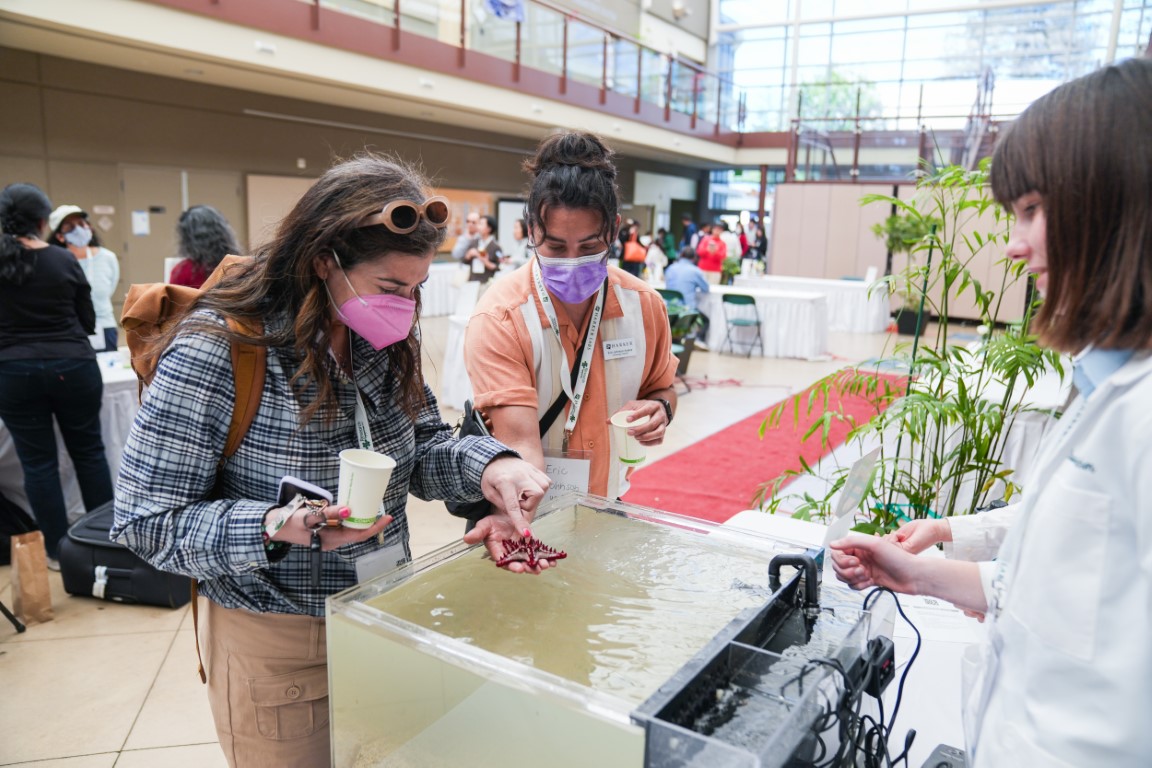The 17th Harker Research Symposium on April 15 brought hundreds of Harker community members to the upper school campus to view student research, hear from fascinating speakers, explore a variety of booths and exhibits and more. The theme,”STEM for All. All for STEM,” focused on diversity, equity and inclusion in the science, technology, engineering and math fields.
Opening speaker Janice Chen, co-founder and CTO of Mammoth Biosciences, spoke on recent advances that have “really paved the way in helping us understand the relationship between our genes and our health.” Her talk covered, among other things, CRISPR sequences that have enabled key advances. “We’ve … been able to train our immune cells for instance, [creating] therapies to specifically find cancer cells while avoiding the healthy ones,” she said. “CRISPR is one of those breakthrough technologies that’s really making a difference in research and development.”
Morning keynote speaker Rohit Vashisht, clinical data scientist in the Butte Lab of University of California, San Francisco’s School of Medicine, spoke on how data science can help address the disparity in the quality of health care in the United States, which negatively affects Black Americans, women and those who lack access to quality education, employment and housing. In his presentation, Vashisht covered his ongoing research in collecting and analyzing data across the country, efforts to curb inequalities in health care and methods to produce data that will result in more equitable decision-making.
Students and student clubs held several workshops during the day, including an introductory class on medical illustration, led by junior Anika Mantripragada, and a beginner’s class on artificial intelligence, hosted by the AI Club. Breakout sessions were held throughout the day, showcasing the research done by Harker upper school students, including Regeneron Science Talent Search semifinalists.
This year’s alumni speaker, Simar Bajaj ’20, presented on the importance of storytelling in passing good scientific policy. Bajaj, who has been involved in science journalism since 2020 and won Science Story of the Year from the Foreign Press association in December, discussed how facts and figures are not enough to sway public opinion. “The reality is that there was never a policy in the history of our country that would just pass because it was a good idea,” he said. “They pass because they’re able to open someone’s eyes, someone’s soul, to the impact, to the purpose.”
At a special alumni panel, Harker alums discussed the various ways their time at Harker led them to their current careers. Alison Rugar ’13 shared the story of how she discovered her love of science through softball. “Softball was actually the basis for my first science project, which I presented here at the symposium,” she said. “As a pitcher, I depended really heavily on my curveball, and in order for breaking pitches to actually move when they cross the plate, you need to put a lot of spin on the ball. So my dad and I set out to measure how much spin I was putting on my pitches. We drilled a hole in a softball, stuck a magnet in, wound a coil of wire and used Faraday’s law of induction. And that was a really great experience. It gave me a lot of basic skills.”
Throughout the day, visitors headed to the auxiliary gym, where middle school students had set up posters to present their research, happily answering questions about their methods and findings. Younger attendees enjoyed the many activities set up at the STEM Buddies area, where stations were run by upper school students who guided the visitors through a series of fun experiments. During lunchtime, the much-loved chemistry magic show wowed the audience with eye-catching displays of various chemical reactions.
